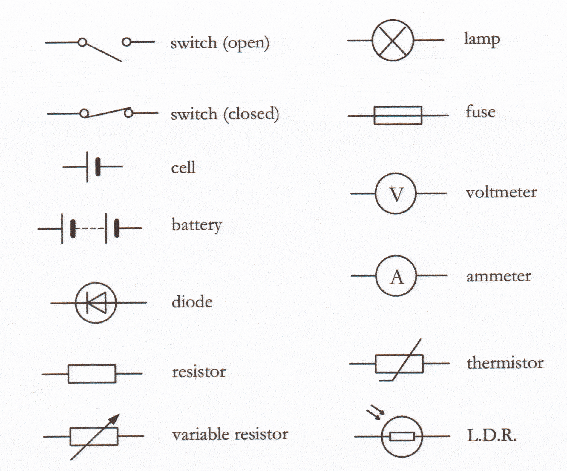Home > Sections > Electromagnetic > Currents & Circuits
Last Updated: 14th June 2023
ARCHIVED ITEM: this page is no longer updated.
Currents & Circuits
Keywords
Circuit, current, conductor, series, parallel, volts, potential difference, amps, amperes, resistance.
Introduction
You have a plug, and a socket. One goes into the other, and you turn it on. It provides power to our devices, lights and more. But what goes on behind the simplicity of a plug and socket?
Let's find out.
Volts, Amps & Watt
If you take a look at the plug on an item that requires power, you'll notice that it has a load of writing (somewhere, usually on the face that fits the socket) on it that tells you about the voltage, amperage and sometimes also the wattage. These actually mean something, and are not just phrases.
Volts: the voltage of a device is determined by the amount of pressure that electricity flows through a system. In terms of your plug, it might say 240V, or a maximum of 250V~. It is also described as the speed of electrons as they move through a circuit.
Volts were first introduced in 1800, and are named after the Italian physicist Alessandro Volta.
Amps: another way to measure the amount of electricity running through a circuit, amps are the rate at which current is flowing through the circuit. This is also the number of electrons passing through the wire.
Amps are named after the French physicist André-Marie Ampère, who worked a lot on electromagnetism.
Watt: wattage is probably the most common term in electricity that people know and use. When you have a light bulb, you know what wattage that is (for an old school bulb, it was wattages like 40w, 60w, 100w; for energy saving bulbs, it is more like 18w, 25w) due to us using them and being consciencious about them. Wattage is the amount of power an electric device uses. So, for your light bulb, 40w is the amount of "electricity at work". If you look at a kettle, most of these will be around 2kW (2000 watts).
Interesting fact: circuits work in both forms of power - direct current (DC), or alternating current (AC).
Creating a Circuit
There are different ways to create a circuit. When drawing a circuit diagram, there are also lots of different symbols to put in. In the resources, you'll find a couple of images that show them.
To build a circuit, you'll need some wire, a battery or cell, and something in between that links it all up. For example, you could have a light bulb, along with the battery. The battery will light up when you connect it all together.
As I said before, there are different types of circuit. They include:
Series: a series circuit is a load of objects that are placed in a line together. Christmas lights. If you have a set of these, they are usually in a series circuit. If one light goes out, the rest do too. This is because they are in series. Power can't get to the rest of the lights if one doesn't work.
Parallel: a parallel circuit is a circuit where everything runs alongside, in parallel, with each other. Back to the Christmas lights. If you run them in a parallel circuit, placing each light on it's own separately powered pathway, if one goes out, the rest stay on.
Take a look at this YouTube video from doodle science about series and parallel ciruits:
Resistance is Futile
We are the Borg. Lower your shields and surrender your ships. We will add your biological and technological distinctiveness to our own. Your culture will adapt to service us. Resistance is futile.
Okay, so this isn't Star Trek, but I'm a geek, and I like things like that. Resistance is how much fight something gives before it goes bust. If we talk in terms of a piece of wood. If you have a plank of wood, and you try and break it in half, it will take some doing. By hand, it might be impossible. If you use a table, and you place it halfway over the edge, it may still be difficult, but you can do it. Before the plank breaks in half, this is the point of most resistance.
In electrical terms, an electrical charge flows along the circuit. If there is something in the way of that - a plug for instance that isn't turned on, the electric flow has to find another route.
Ohms
When an electric current follows a path, it will search out the path of least resistance. This is measured in Ohms.
Think of your own body. Your blood needs to go through all those arteries, veins and capillaries to pump the blood around your body. If there's something that's blocking any of those (a clogged artery with cholesterol, for example), then there is resistance in the flow of blood.
The same is said for an electrical wire. You need a good conductor of electricity for the best result. We often use copper for this purpose, as there is a constant and even flow of electrons along the metal when powered.
End Note
We know that volts is measured for the amount of pressure in the electrical charge. We know that amps are measured as the rate of flow of electricity, and we know that watts are how much power a device needs to operate at an acceptable level. Ohms is the path of least resistance, and resistance is futile.




 What is the Circulatory System?
What is the Circulatory System? Energy Loss
Energy Loss André-Marie Ampère
André-Marie Ampère

